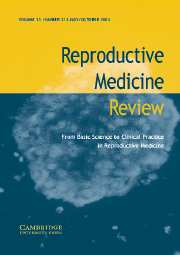Article contents
Male-mediated developmental defects and childhood disease
Published online by Cambridge University Press: 23 October 2000
Abstract
Reproductive and developmental toxicology has existed, in some form, at least since the Middle Ages when women commonly used naturally derived abortifacients for birth control. Percival Pott was the first to observe that environmental exposures could detrimentally affect the male reproductive system. He noticed that chimney sweeps exposed to soot developed testicular cancer and infertility at unusually young ages. The formal investigation of male-mediated effects on offspring (germline mutagenesis) began with the pioneering studies of Muller, Hertwig, Snell, Brenneke, and others, who established X-rays as the first identified agent capable of inducing hereditary changes in mice. They showed that litters sired by irradiated males contained fewer pups than controls. Because sperm motility and density were not affected, but chromosome abnormalities were found in fertilized eggs, they concluded that irradiated sperm were the source of the abnormal chromosomes. Since that discovery, the mutagenic effects of radiation on the male germline have been studied extensively (see below). Later, Auerbach & Robson and Bock & Jackson were the first to demonstrate that exposing mice to chemicals decreases their fertility and induces chromosomal abnormalities and other mutations in the male germline. The subsequent five decades of work on chemical mutagens has resulted in a detailed biochemical and genetic characterization of chemical mutagenesis in the male germline and male-mediated developmental problems in laboratory animals (see below).
- Type
- Research Article
- Information
- Copyright
- © 2000 Cambridge University Press
- 12
- Cited by


